ORNO OR-CR-206 Handleiding
Bekijk gratis de handleiding van ORNO OR-CR-206 (4 pagina’s), behorend tot de categorie Detector. Deze gids werd als nuttig beoordeeld door 56 mensen en kreeg gemiddeld 4.4 sterren uit 28.5 reviews. Heb je een vraag over ORNO OR-CR-206 of wil je andere gebruikers van dit product iets vragen? Stel een vraag
Pagina 1/4

OR- -206 CR
(PL) Czujnik ruchu i dźwięku
(EN) Sound and motion sensor
(DE) Bewegungs- und Schallsensor
ORNO-LOGISTIC Sp. z o.o.
ul. Rolników 437
44-141 Gliwice POLAND
tel. (+48) 32 43 43 110
WAŻNE!
Przed rozpoczęciem korzystania z urządzenia, należy zapoznać się z niniejszą instrukcją obsługi oraz zachować ją na przyszłość. Dokonanie samodzielnych napraw i
modyfikacji skutkuje utratą gwarancji. Producent nie odpowiada za uszkodzenia mogące wyniknąć z nieprawidłowego montażu czy eksploatacji urządzenia.
Z uwagi na fakt, ystyki wyrobu że dane techniczne podlegają ciągłym modyfikacjom, Producent zastrzega sobie prawo do dokonywania zmian dotyczących charakter
oraz wprowadzania innych rozwiązań konstrukcyjnych niepogarszających parametrów i walorów użytkowych produktu.
Dodat -kowe informacje na temat produktów marki ORNO dostępne są na: www.orno.pl. Orno Logistic Sp. z o.o. nie ponosi odpowiedzialności za skutki wynikające z
nieprzestrzegania zaleceń niniejszej instrukcji. Firma Orno-Logistic Sp. z o.o. zastrzega sobie prawo do wprowadzania zmian w instrukcji - aktualna wersja do pobrania
ze strony www.orno.pl. Wszelkie prawa do tłumaczenia/interpretowania oraz prawa autorskie niniejszej instrukcji są zastrzeżone.
1. Wszelkie czynności wykonuj przy odłączonym zasilaniu.
2. Nie zanurzaj urządzenia w wodzie i innych płynach.
3. Nie obsługuj urządzenia gdy uszkodzona jest obudowa.
4. Nie otwieraj urządzenia i nie dokonuj samodzielnych napraw.
5. Nie używaj urządzenia niezgodnie z jego przeznaczeniem.
IMPORTANT!
Before using the device, read this Service Manual and keep it for future use. Any repair or modification carried out by yourselves results in loss of guarantee. The
manufacturer is not responsible for any damage that can result from improper device installation or operation.
In view of the fact that the technical data are subject to continuous modifications, the manufacturer reserves a right to make changes to the product characteristics
and to introduce different constructional solutions without deterioration of the product parameters or functional quality.
Additional information about ORNO products are available at www.orno.pl. Orno-Logistic Sp. z o.o. holds no responsibility for the results of non-compliance with the
provisions of the present Manual. Orno Logistic Sp. z o.o. reserves the right to make changes to the Manual - the latest version of the Manual can be downloaded from
www.orno.pl. Any translation/interpretation rights and copyright in relation to this Manual are reserved.
1. Disconnect the power supply before any activities on the product.
2. Do not immerse the device in water or other fluids.
3. Do not operate the device when its housing is damaged.
4. Do not open the device and do not repair it by yourselves.
5. Do not use the device against its intended use.
WICHTIG!
Bevor Sie das Gerät in Betrieb nehmen, lesen Sie bitte diese Bedienungsanleitung und bewahren Sie sie zum späteren Nachschlagen auf. Eigene Reparaturen und
Modifikationen führen zum Verlust der Garantie. Der Hersteller haftet nicht für Schäden, die durch unsachgemäße Montage oder Bedienung des Gerätes entstehen
können.
Da die technischen Daten ständigen Änderungen unterliegen, behält sich der Hersteller das Recht vor, Änderungen an den Produkteigenschaften vorzunehmen und
and ere konstruktive Lösungen einzuführen, die die Parameter und funktionellen Eigenschaften des Produkts nicht beeinträchtigen.
Für weitere Informationen zu ORNO Logistic Sp. z o.o. haftet nicht für-Produkten besuchen Sie bitte die Website: www.orno.pl. Orno- die Folgen der Nichtbeachtung
der Anweisungen in dieser Bedienungsanleitung. Firma Orno- - Logistic Sp. z o.o. behält sich das Recht vor, Änderungen in der Bedienungsanleitung vorzunehmen
aktuelle Version zum Herunterladen unter www.orno.pl. Alle Rechte an Übersetzung/Dolmetschen und Urheberrechten an dieser Bedienungsanleitung sind
vorbehalten.
1. Alle Arbeiten dürfen nur bei abgeschalteter Stromversorgung durchgeführt werden.
2. Tauchen Sie die Einrichtung niemals in Wasser oder anderen Flüssigkeiten.
3. Nutzen Sie das Gerät nicht, wenn ihre Gehäuse beschädigt ist.
4. Öffnen Sie die Einrichtung nicht und führen Sie keine selbstständigen Reparaturen aus.
5. Verwenden Sie das Gerät nicht unsachgemöß.
Każde gospodarstwo jest użytkownikiem sprzętu elektry znego i elektronicznego, a co za tym idzie potencjalnym wytwórcą niebezpiecznego dla ludzi i środowiska odpadu, z tytułuc
obecności w sprzęcie niebezpiecznych substancji, mieszanin oraz części składowych. Z drugiej strony zużyty sprzęt to cenny materiał, z którego możemy odzyskać surowce takie jak
miedź, cyna, szkło, żelazo i inne.
Symbol przekreślonego kosza na śmieci umieszczany na sprzęcie, opakowaniu lub dokumentach do niego dołączonych oznacza, że produktu nie wolno wyrzucać łącznie z innymi
odpadami. O znakowanie oznacza jednocześnie, że sprzęt został wprowadzony do obrotu po dniu
13 sierpnia 2005 r. Obowiązkiem użytkownika jest przekazanie zużytego sprzętu do wyznaczonego punktu zbiórki w celu właściwego jego przetworzenia. Informacje o dostępnym
systemie zbierania zużytego sprzętu elektrycznego można znaleźć w punkcie informacyjnym sklepu oraz w urzędzie miasta/gminy. Odpowiednie postępowanie ze zużytym sprzętem
zapobiega negatywnym konsekwencjom dla środowiska naturalnego i ludzkiego zdrowia!
Each household is a user of electrical and electronic equipment, and hence a potential producer of hazardous waste for humans and the environment, due to the presence of hazardous
substances, mixtures and components in the equipment. On the other hand, used equipment is valuable material from which we can recover raw materials such as copper, tin, glass,
iron and others. The weee sign placed on the equipment, packaging or documents attached to it indicates the need for selectiv e collection of waste electrical and electronic equipment
Products so marked, under penalty of fine, cannot be thrown into ordinary garbage along with other waste. The marking means at the same time that the equipment was placed on the
market after August 13, 2005. It is the responsibility of the user to hand the used equipment to a designated collection point for proper processing. Used equipment can also be han ded
over to the seller, if one buys a new product in an amount not greater than the new purchased equipment of the same type. Information on the available collection system of waste
electrical equipment can be found in the information desk of the store and in the municipal office or district office. Proper handling of used equipment prevents negative consequences
for the environment and human health!
Jeder Haushalt ist ein Anwender von Elektro- vonund Elektronikgeräten und damit ein potenzieller Erzeuger von Abfällen, die für Mensch und Umwelt aufgrund des Vorhandenseins
gefährlichen Stoffen, Gemischen und Komponenten in den Geräte gefährlich sind. Andererseits sind Altgeräte ein wertvoller Rohstoff, aus dem Rohstoffe wie Kupfer, Zinn, Glas, Eisenn
und andere zurückgewonnen werden können. Das Symbol der durchgestrichenen Mülltonne auf der Verpackung, dem Gerät oder den da zugehörigen Dokumenten, weist auf die
Notwendigkeit der getrennten Sammlung von Elektro- und Elektronikaltgeräten hin. Auf diese Weise gekennzeichnete Produkte dürfen unter Strafe nicht zusammen mit anderen
Abfällen entsorgt werden. Die Kennzeichnung weist gleichzeit g darauf hin, dass die Geräte nach dem 13 August 2005 in Verkehr gebracht wurden. Es liegt in der Verantwortung desi
Benutzers, die Altgeräte zur ordnungsgemäßen Behandlung an eine dafür vorgesehene Sammelstelle zu bringen. Informationen über das verfügbar e System zur Sammlung von
Elektroaltgeräten finden Sie in der Informationsstelle des Ladens und im Magistrat/Gemeindeamt. Ein sachgemäßer Umgang mit Altgeräten verhindert negative Folgen für die Umwelt
und die menschliche Gesundheit!
02/2021

2
SKRÓCONA TRUKCJA OBSŁUGI/ QUICK GUIDE/ KURZANLEITUNG INS
N - Zacisk neutralny/ Neutral terminal/ Neutrale Klemme
Lin - Napięcie wejściowe/ Input voltage/ Eingangsspannung
- Obciążenie/load/Belastung
rys.1/ fig.1/ Abb.1
rys.2/ fig.2/ Abb.2
SPECYFIKACJA TECHNICZNA/ TECHNICAL DATA/ TECHNISCHE DATEN
Zasilanie
Power supply
Stromversorgung
230V~, 50Hz
Max. obciążenie
Max. load
Max. Belastung
5 00W
Kąt detekcji czujnika
Detection angle
Erfassungswinkel
1600
Regulacja czujnika natężenia światła
Adjustable daylight sensor
Einstellbarer Tageslichtsensor
<3-2000 lux
Regulacja czasu świecenia
Adjustable time setting
Einstellbare Leuchtdauer
min. 10sek.±3sek.
max.7min.±2min.
Regulacja czuj nika dźwięku
Adjustable sound setting
Einstellbare Soundeinstellung
30-90dB
Zasięg detekcji czujnika
Detection range
Erfassungsbereich
4-9m
Stopień ochrony
Protection level
Schutzart
IP20
Waga netto
Net weight
Nettogewicht
0,12 kg
Temp. pracy
Working temperature
Betriebstemperatur
-200C~400C
Wysok ość montażu
Installation height
Montagehöhe
1-1 m ,8
Współpracuje z LED
Works with LED
Arbeitet mit LED
Czujnik obecności
Presence sensor
Anwesenheitssensor
Przekaźnik
Relay
Relais
PL
Instrukcja obsługi
CHARAKTERYSTYKA
Czujni k służy do automatycznego sterowania oświetleniem.
Urządzenie można zainstalować w puszcze elektrycznej 60mm.
Urządzenie działa na zasadzie czujnika wyposażonego w detektor ruchu PIR oraz detektor dźwięku.
Urządzenie może działać jako zwykły wyłącznik przy wykorzystaniu przełącznika ON/OFF, a także jako czujnik ruchu.
Urządzenie pracuje w świetle dziennym lub w ciemności w zależności od regulacji pokrętłem czujnika LUX.
Użytkownik ma możliwość regulacji:
- - cji czujnika czasu działania TIME umożliwia określenie czasu przez jakie urządzenie będzie działało po aktywa
- poziomu natężenia oświetlenia światła LUX
- czułości czujnika dźwięku MIC
- zasięgu wykrywania ruchu SENS
Umiejscowienie pokręteł pod przednim panelem urządzenia zabezpiecza przed przypadkową zmianą ustawień.
INSTALACJA
1. Wyłącz zasilanie.
2. Sprawdź odpowiednim przyrządem stan beznapięciowy na przewodach zasilających.
3. Zdejmij przednią osłonę czujnika.
4. Poluzuj śrubki mocujące przewody w górnej części urządzenia (rys. 1), a następnie podłącz zgodnie ze schematem (rys. 2).
5. Zamontuj urządzenie w puszce elektrycznej do wyłączników ściennych, tak jak montujemy zwykły wyłącznik ścienny.
6. Włącz zasilanie i przeprowadź test urządzenia.
DZIAŁANIE
1. Ustaw przełącznik z przodu urządzenia w pozycji WŁĄCZ (ON). Ustaw pokrętło SENS w kierunku zgodnym z ruchem wskazówek zegara na MAX, pokrętło MIC na środku, pokętło LUX w kierunku
zgodnym z ruchem wskazówek zegara na MAX, a pokrętło TIME w kierunku przeciwnym do ruchu wskazówek zegara na MIN.
2. Włącz zasilanie.Oświetlenie, do którego podłączone jest urządzenie, powinno teraz się zaświecić.
3. Przestaw przełącznik z przodu urządzenia na pozycję WYŁĄCZ (OFF). Oświetlenie powinno zgasnąć i wszystkie funkcje powinny zostać wyłączone.
4. Przest PIR (czujnik ruchu). Po aw przełącznik na pozycję 30 sek. urządzenie rozpocznie pracę. Oświetlenie włączy się na 20 sek., gdy czujnik wykryje ruch. Jeżeli następnie czujnik nie wykryje ruchu
oświetlenie samo zgaśnie w ciągu 5 sek.- 10 sek.
5. runku odwrotnUstaw pokrętło LUX w kie ym do ruchu wskazówek zegara na MIN. Kiedy oświetlenie się wyłączy i czujnik nie wykryje ruchu, oświetlenie pozostanie wyłączone w ciągu dnia. Jeżeli
nastąpi jakiś ruch oświetlenie włączy się automatycznie na 5 sek. i ponownie wyłączy.
6. Ustaw przełącznik na pozycję PIR+MIC, a pokrętło LUX na MAX. Teraz urządzenie będzie działało w trybie czujnika ruchu (PIR) oraz czujnika dźwięku. Urządzenie będzie reagować na ruch
i dźwięk (np. klaśnięcie w dłonie). Ustaw czas działania TIME według potrzeb.
Uwaga: i tesJeżel tujesz urządzenie w ciągu dnia przekręć pokrętło LUX na pozycję , w przeciwnym razie czujnik nie będzie działał prawidłowo.

3
NIEKTÓRE PROBLEMY I SPOSOBY ICH ROZWIĄZANIA
Obciążeni ła: e nie dzia
a. Sprawdzić podłączenie zasilania i odbiornika.
Słaba czułość:
a. Sprawdzić, czy przed czujnikiem nie znajdują się urządzenia, które mogą zakłócić odbierane sygnały.
b. Sprawdź temperaturę otoczenia.
c. Sprawdź, czy wykrywany obiekt znajduje się w polu detekcji
d. Spraw dź wysokość instalacji.
Czujnik nie może automatycznie wyłączyć obciążenia:
a. W polu detekcji występują ciągłe sygnały ruchu.
b. Sprawdź czy opóźnienie czasowego nie jest ustawione na najdłuższą wartość.
c. Sprawdź czy zasilanie jest zgodne z instrukcją.
d. Sprawdź czy czujnik nie jest zamontowany w pobliżu klimatyzatora lub centralnego ogrzewania, itp.
BEZPIECZEŃSTWO I KONSERWACJA
Konserwację wykonywać należy przy odłączonym zasilaniu.
Czyścić wyłącznie delikatnymi i suchymi tkaninami.
Nie używać chemicznych środków czyszczących.
EN
Operating and installation instructions
DESCRIPTION
The sensor is used to automatically control lighting.
It can be fixed in a standard cable installation box (60mm diameter).
The receiver (light) is switched on by means of PIR motion sensor and sound detector (microphone).
The device can be used as a standard ON/OFF switch or as a motion sensor.
It operates both day and night depending on the adjustment of LUX potentiometer.
The following parameters can be adjusted:
- TIME - lighting time adjustment, specifies the time of the device's operation after the sensor activation,
- LUX luminous intensity level, –
- MIC sound intensity level, –
- SENS motion detection range. –
All potentiometers are placed under the front panel of the sensor, which protects them against accidental change of the settings.
INSTALLATION
1. Switch off the power.
2. Use a proper device (e.g. power tester) to check if there are any live wires left.
3. Unload the front cover of the device.
4. Loosen the mounting screws on the top of the device (fig. 1) and then connect the wires as per the wiring scheme.
5. Connect the device inside an installation box in a regular way (installation method for standard wall switches).
6. Switch on the power and test the device.
OPERATION
1. rn the front switch on. Turn the SENS knob clockwise to MAX position. Turn the MIC knob to the middle. Turn the LUX knob clockwise to MAX position, and the TIME knob anti-clockwise to Tu
MIN position.
2. Switch on the power. The lamp controlled by the sensor should be now activated.
3. Turn the front switch off. The lamp should be turned off and all other functions should not be active.
4. Turn the switch to PIR position (motion sensor). The device will start work after 30 secs. If any motion is detected, the lamp will turn on for 20 secs. After the lapse of 5-10 secs from the last
detected motion, the sensor will be turned off automatically.
5. Turn the LUX knob anti-clockwise to MIN position. Once the light is turned off and no successive movement has been detected, the lamp remains turned off during the daytime. If any movement
is detected, the lamp will switch on automatically for 5 secs. and then it will switch off.
6. Turn the switch to PIR+MIC position and the LUX knob to MAX position. From now on, the device works as both: PIR motion sensor and a sound detector. It will react to movement and sound
(e.g. hand clapping). Adjust the TIME knob according to your own preferences.
Note: when testing in daylight, please turn LUX knob to (SUN ) position, otherwise the sensor could not work.
SOME PROBLEMS AND SOLUTIONS
The load does not work:
a. Please check if the connection of power source and load is correct.
The sensitivity is poor:
a. Please check if there is any hindrance in front of the detector to affect it to receive the signals.
b. Please check if the ambient temperature is correct.
c. Please check if the induction signal source is in the detection field.
d. Please check if the installation height corresponds to the height required in the instruction.
The sensor can not shut off the load automatically:
a. Please check if there is continual signal in the detection field.
b. Please check if the time delay is set to the maximum position.
c. Please check if the power corresponds to the instruction.
d. Please check whether the sensor has been situated next to any air-conditioning or heating unit, etc.
SAFETY AND MAINTENANCE
Maintenance should be carried out with power disconnected.
Clean only with delicate and dry fabrics.
Do not use chemical cleaners.
DE
Bedienungsanleitung und Montageanleitung
BESCHREIBUNG UND ANWENDUNG
Der Sensor dient der automatischen Steuerung der Beleuchtung.
Das Gerät kann in einem Schaltkasten mit einem Durchmesser von 60 mm installiert werden.
Das Gerät arbeitet nach dem Prinzip eines Sensors, der mit einem PIR-Bewegungsmelder und einem Schalldetektorausgestattet ist.
Das Gerät kann sowohl als einfacher Schalter mit einem EIN/AUS sches Suchgerät mit einem-Schalter als auch als automati Bewegungsmelder betrieben werden.
Funktioniert bei Tageslicht oder Dunkelheit, je nach Einstellung des LUX-Sensorknopfes.
Der Sensor ermöglicht es dem Benutzer, eine Vielzahl von Betriebskonfigurationen einzurichten:
- Steuerung der Betriebsdauer des Ger -Drehknopf ätes nach der Erkennung, einstellbar über den TIME
- eine einstellbare Betriebsart, abhängig von der Umgebungshelligkeit mit dem LUX-Drehknopf
- Schallsensor-Empfindlichkeit MIC
- Bewegungserfassungsbereich-SENS
Die Position der Knöpfe unter der Frontplatte des Gerätes verhindert versehentliche Änderungen der Einstellungen.
Product specificaties
| Merk: | ORNO |
| Categorie: | Detector |
| Model: | OR-CR-206 |
Heb je hulp nodig?
Als je hulp nodig hebt met ORNO OR-CR-206 stel dan hieronder een vraag en andere gebruikers zullen je antwoorden
Handleiding Detector ORNO
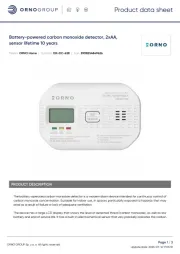
11 Augustus 2025
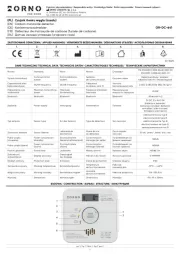
11 Augustus 2025
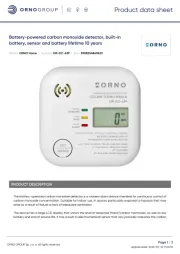
11 Augustus 2025

22 Augustus 2024

26 Juni 2023

19 Juni 2023

17 Juni 2023

16 Juni 2023

23 Mei 2023

22 Mei 2023
Handleiding Detector
- Uniden
- Pentatech
- Elro
- Kyoritsu
- DSC
- X-Sense
- Soler & Palau
- Schabus
- Amprobe
- Fisher
- Axis
- Bounty Hunter
- Benewake
- Netatmo
- Beha-Amprobe
Nieuwste handleidingen voor Detector
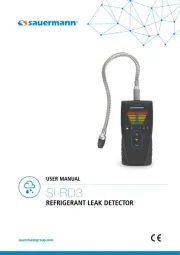
1 September 2025

20 Augustus 2025
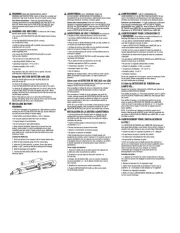
18 Augustus 2025

12 Augustus 2025
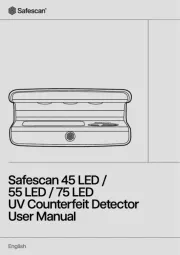
8 Augustus 2025
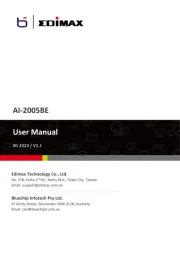
28 Juli 2025
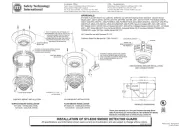
24 Juli 2025
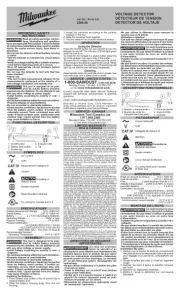
22 Juli 2025
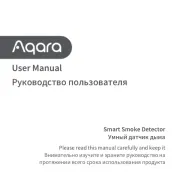
5 Juli 2025
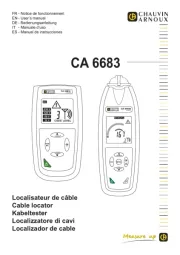
4 Juli 2025